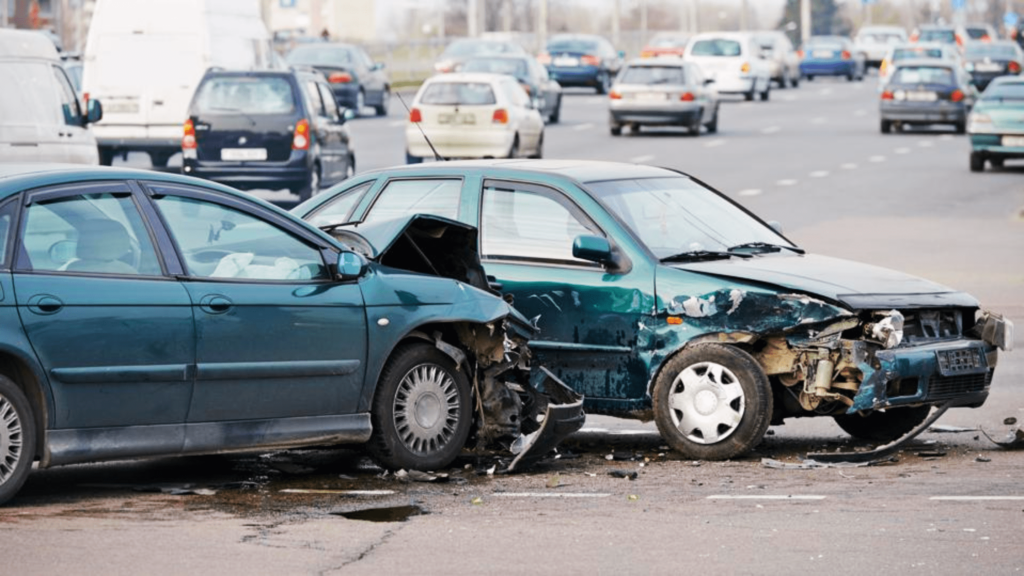- News
- We All Have a “Stake” in Reducing Deadly “T-Bone” Accidents: But Who’s At-Fault for Them?
We All Have a “Stake” in Reducing Deadly “T-Bone” Accidents: But Who’s At-Fault for Them?

Content warning: this article contains language and video relating to auto accidents that may be disturbing to some readers.
Say you’re approaching an intersection, there are no cars in front of you, and the light has just turned green. Looks like smooth sailing until – WHAM! – your car is slammed by someone speeding through the red light. That is what’s called a T-bone collision. Because when two vehicles collide in a broadside crash, the resulting perpendicular impact forms a shape like the letter T. Simply said, it’s one of the deadliest kinds of crashes you can experience.
But T-bone accidents don’t always happen at intersections ruled by traffic signals. People run stop signs, ignore yield signs, unexpectedly enter roadways from unmarked driveways or parking lots, and even blindly turn into the path of oncoming traffic at stoplights. In any of those circumstances, a T-bone crash can take place with devastating results. So, following basic traffic rules such as looking both ways after coming to a complete stop at an intersection, and taking the time to wait for traffic to completely clear after a light turns green, could truly make the difference between life and death.
Destructive Force of T-Bone Crashes Caught on Video
As this terrifying video from a recent Grand Rapids incident demonstrates, T-bone crashes can result in dramatic injuries from a combination of speed and (sometimes) recklessness. In this case, drag racing cars collided with innocent bystanders, and one woman ended up hospitalized. Or take a look at what happened in this scary Michigan scene where a police vehicle collided with an SUV that had been stolen and was attempting to evade capture.
These kinds of accidents often result in collateral damage, where people not involved in the T-bone are subsequently injured after the initial crash spreads damage to nearby buildings or cars, inflicting harm on other motorists, and even hurting unwary bicyclists or pedestrians. Please remember: whenever you approach an intersection, be sure to stop and look to your left and your right before proceeding!
Types of Injuries Sustained in a T-Bone Accident
After seeing these horrific accidents, you can probably imagine the extent of injuries sustained by the unfortunate passengers and drivers in the impacted vehicles. Unlike front- and rear-end collisions – where much of the impact can be absorbed by crush zones, airbags, and seatbelts – side-impact crashes of this nature expose victims to more serious injuries because they involve the least protective sections of the car. Mere inches of sheet metal in your car doors separate you from multi-ton vehicles traveling at high rates of speed. It can get ugly and it’s always dangerous in any type of vehicle, but perhaps most deadly of all when a car and an SUV are the two vehicles involved. In one historic study published by the National Institutes of Health, it was shown that the people in cars hit broadside by SUVs were far more likely to die than the SUV occupants, due mostly to the larger mass of the SUVs which inflicted greater damage to smaller vehicles while affording higher protection to the SUV’s occupants.
As we’ve noted in our own research and through many years of experience dealing with thousands of personal injury cases, T-bone crashes can cause blunt-force trauma injuries, organ damage from internal bleeding, traumatic brain injuries, broken bones, and extreme spinal damage even leading to paralysis. Long-term consequences can also occur, including loss of mobility, permanent disability, chronic pain, loss of income, and reduced quality of life.
Who’s Responsible for a T-Bone Collision?
If you run a red light, you’re no doubt significantly at fault for whatever happens afterward, but especially in a T-bone accident. If you’re speeding – even if you have the green light in your favor – you probably also share some responsibility for any crash in which you’re involved. Michigan law applies “comparative negligence” (a concept we defined in a previous article) to determine a driver’s share of responsibility for any accident, and your settlement amount in a lawsuit will be reduced based upon the degree of culpability you bear for the incident.
Briefly, Michigan uses the so-called “51 Percent Rule” to determine whether someone is entitled to collect damages in a personal injury suit where negligence is at issue. This means the court compares the actions of the two parties involved in an injury-related case, and if you’re found to be 51% or more responsible for the accident, you can’t collect damages from the other party. For example, if you make an illegal U-turn in front of someone going the opposite direction who happens to be speeding over the posted limit, you and the other driver are both likely to be found responsible for factors leading to the resulting impact. It will be up to the court to determine if you share equal blame for the accident, or if one of you is more guilty than the other. If the speeding driver is determined to be 51% or more responsible, you’d be eligible to collect compensation under Michigan law even though you were partially at fault for the accident. But any settlement you win would be reduced by the percentage of your personal responsibility for the incident as determined by the court.
In other cases, it’s possible that mistimed traffic signals, missing stop or yield signs, power outages that affect stoplights, bad weather such as fog, ice, rain or snow, or other poor road conditions could lead to broadside accidents. In some of these situations, it might be possible to lay blame at the feet of a local governmental agency, MDOT, the shopping center owner, or another responsible party. Since every case is different, police reports, eyewitness statements and the sworn testimony of expert witnesses will usually be required to assess blame, and an ACTAR-certified accident reconstruction expert may possibly be called in to determine who was ultimately responsible for the crash.
What About No-Fault Insurance in a T-Bone Accident?
As you probably know, Michigan’s No-Fault auto insurance law was designed to help reduce or limit lawsuits resulting from accidents by requiring all motorists to purchase policies covering their own injuries and losses. Fortunately, thanks to the foresight of Michigan lawmakers, you can sue an at-fault driver if you or someone you love was seriously injured, disfigured, or killed in an accident. Specifically, the language of the law reads that the victim must have experienced “serious impairment of body function,” which is defined here. Likewise, if you cause an accident where someone has suffered life-changing injuries or death, you can be sued as well under the same legislation.
Not long ago, the state adjusted its No-Fault laws to allow drivers to choose lower coverage limits in an attempt to help Michigan residents reduce their auto insurance premiums. But by choosing a low-cost option, you may be leaving yourself and your family vulnerable to financial calamity (the state says “severe financial consequences”) following an accident where you were at fault, since you would be personally responsible for any damages that exceed your policy coverage limits. That’s why we always urge our readers to choose unlimited Personal Injury Protection (PIP) coverage when buying auto insurance. Yes, it costs a bit more up front, but it could save you and those you love from bankruptcy down the road.
Don’t Get Boned in an Accident – Or After One.
We imagine that after reading this article and seeing those striking videos you’ll agree T-bone collisions are among the worst highway incidents that a driver can encounter. And we hope that you’ve gained a better understanding of what to do if you are one day involved in a T-bone crash. Which is to call 855-MIKE-WINS (855-645-3946) right away. We have wide-ranging experience helping our clients recover damages – and simply recover – from injuries like the ones we’ve described. Put us to work on your side by making us your trusted legal advocates. All it takes is a phone call, or you can click right here to get in touch.

Content checked by Mike Morse, personal injury attorney with Mike Morse Injury Law Firm. Mike Morse is the founder of Mike Morse Law Firm, the largest personal injury law firm in Michigan. Since being founded in 1995, Mike Morse Law Firm has grown to over 200 employees, served 40,000 clients, and collected more than $1.5 billion for victims of auto, truck and motorcycle accidents. The main office is in Southfield, MI but you can also find us in Detroit, Sterling Heights and many other locations.








